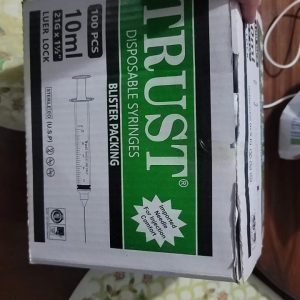1. Protective eyewear must be worn by practitioner, assistant and patient. Protective gloves must be worn by practitioner and assistant.
2. Place rubber dam to isolate operative site and protect soft tissue.
3. Assistant must stand ready at chairside and hold vacuum tip 2-3 inches from porcelain surface during the etching process to evacuate acid fumes.
4. Securely attach 25-gauge luer lock applicator tip to syringe. Carefully start the flow of Porcelain Etch Gel on a pad and immediately dispose of this sample. Do not start flow in patient’s mouth. For maximum control of flow, do not push on plunger with thumb. It is recommended instead to hold syringe barrel between thumb and forefinger while resting plunger in palm of hand. Gently pull back with thumb and forefinger to start flow. Use a new dispenser needle for each patient.
5. Carefully apply Porcelain Etch Gel to porcelain surface and leave for one minute while evacuating fumes with vacuum. For lithium disilicate restorations, etch for 10-15 seconds. Some ceramic materials are resistant to etching. To achieve a surface suitable for bonding to these materials, air abrasion is recommended. Creating mechanical retention is advantageous. Cap syringe immediately after use.
6. Rinse surface with copious amounts of water and dry porcelain surface with clean uncontaminated air.
7. If using EmbraceTM First-CoatTM, follow instructions for use for First-CoatTM or the EmbraceTM Restoration and PFM Repair Kit. If using Pulpdent Silane Bond Enhancer, follow instructions for use for silane.
8. Proceed with repairs of fractured porcelain teeth or with cementation of porcelain crowns, veneers or inlays.


















